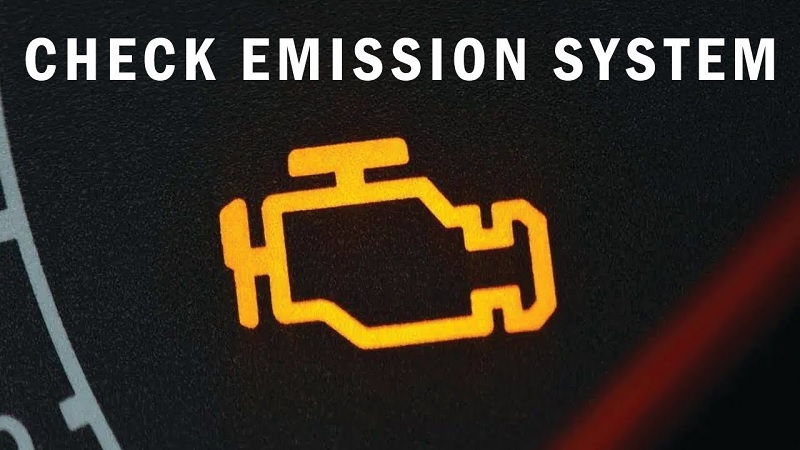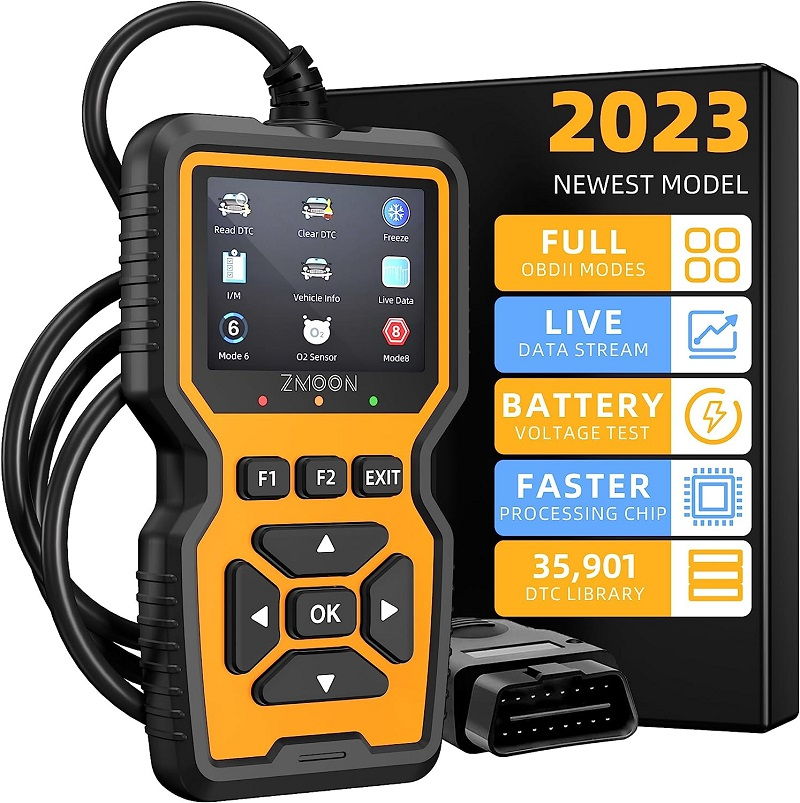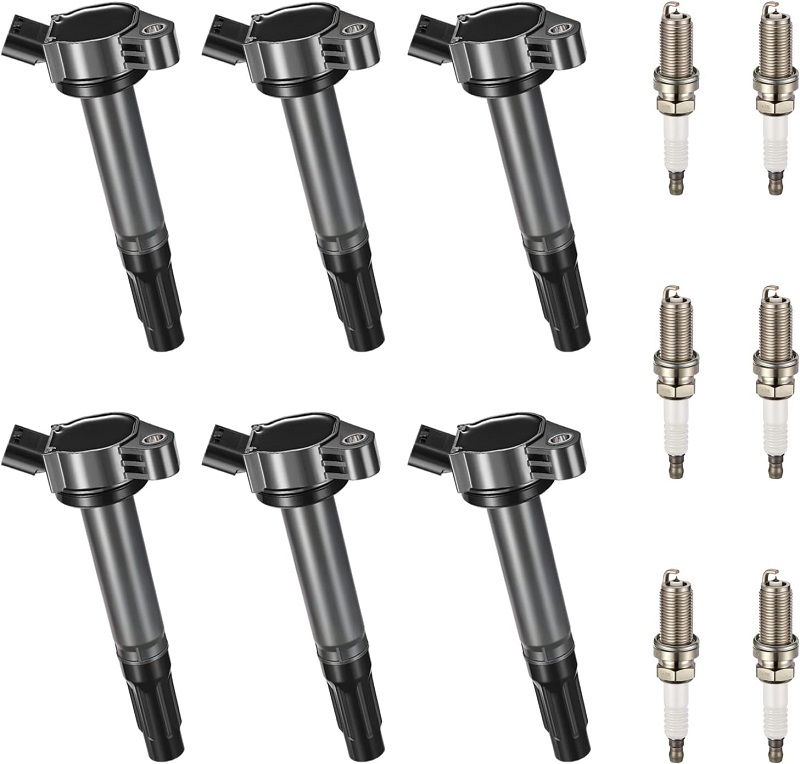This post contains affiliate links. This means I will make a commission at no extra cost to you should you click through and make a purchase [ “As an Amazon Associate, I earn from qualifying purchases.” ]. Read the full disclosure here.
Engine Emission Warning GuideMechanic.Com Engine emission warning lights have become an increasingly common sight on modern vehicles.
These warning lights are designed to alert drivers to potential issues with their vehicle’s emissions system, which can have a significant impact on both the environment and the performance of the vehicle itself.
In this blog article, we will delve deep into the world of engine emission warnings, providing you with a detailed and comprehensive guide to help you understand their importance, how they work, and what actions you should take when they appear.
The Importance of Engine Emission Control

The importance of engine emission control cannot be overstated. A properly functioning emissions system not only helps to protect the environment by reducing harmful pollutants but also ensures that your vehicle operates efficiently and performs optimally.
See Also: Engine Light With Down Arrow
Emissions control systems are designed to minimize the release of pollutants such as nitrogen oxides (NOx), carbon monoxide (CO), and hydrocarbons (HC) into the atmosphere.
Environmental Impact
The emissions produced by vehicles have a detrimental impact on the environment. Nitrogen oxides contribute to the formation of smog and acid rain, while carbon monoxide is a harmful gas that can lead to respiratory problems and climate change.
Hydrocarbons are a precursor to the formation of ground-level ozone, which can cause respiratory issues and harm plant life.
By controlling and reducing these emissions, we can help mitigate the negative effects on the environment and promote cleaner air quality.
Human Health
Poor air quality resulting from vehicle emissions can have serious health implications for humans. Exposure to nitrogen oxides and carbon monoxide can lead to respiratory problems, cardiovascular issues, and increased susceptibility to respiratory infections.
Hydrocarbons are known to contribute to the formation of smog, which can worsen respiratory conditions such as asthma. By effectively controlling engine emissions, we can help protect human health and improve overall well-being.
Vehicle Performance
An engine emission warning light should not be ignored as it can indicate underlying issues that affect the performance of your vehicle.
Faulty emissions control systems can result in decreased fuel efficiency, reduced engine power, and increased exhaust emissions.
Ignoring these warning signs may lead to further damage to engine components, resulting in costly repairs and decreased overall vehicle performance. It is essential to address engine emission warnings promptly to ensure your vehicle operates at its best.
Common Causes of Engine Emission Warning

Engine emission warning lights can be triggered by a range of issues within the emissions control system.
Understanding the common causes can help you diagnose the problem accurately and take appropriate action. Here are some of the most frequent culprits:
Malfunctioning Oxygen Sensor
The oxygen sensor is responsible for measuring the amount of oxygen in the exhaust gases. A malfunctioning oxygen sensor can provide incorrect readings to the engine control unit (ECU), leading to an imbalance in the air-fuel mixture. This can result in increased emissions and trigger the engine emission warning light.
Faulty Catalytic Converter
The catalytic converter plays a crucial role in reducing harmful emissions by converting pollutants into less harmful substances.
See Also: Toyota Camry Dashboard Lights
A faulty catalytic converter may not effectively carry out this process, leading to increased emissions and triggering the engine emission warning light.
Loose or Damaged Gas Cap
A loose or damaged gas cap can cause fuel vapor to escape from the fuel tank, leading to increased emissions of hydrocarbons.
The onboard diagnostics system detects this issue and triggers the engine emission warning light to alert you of the problem.
Malfunctioning EGR Valve
The Exhaust Gas Recirculation (EGR) valve is responsible for recirculating a portion of the exhaust gases back into the engine to reduce nitrogen oxide emissions.
A malfunctioning EGR valve can cause an imbalance in the air-fuel mixture, leading to increased emissions and triggering the engine emission warning light.
Worn-out Spark Plugs or Ignition Coils
Spark plugs and ignition coils are essential components in the combustion process. When these components become worn out or faulty, they can cause misfires, resulting in increased emissions and triggering the engine emission warning light.
Cracked or Damaged Vacuum Hoses
Vacuum hoses play a vital role in maintaining the proper functioning of various systems in your vehicle, including the emissions control system.
Cracked or damaged vacuum hoses can lead to vacuum leaks, causing an imbalance in the air-fuel mixture and increased emissions.
Failed Mass Airflow Sensor
The mass airflow sensor measures the amount of air entering the engine, allowing the ECU to adjust the fuel injection accordingly.
A failed mass airflow sensor can provide inaccurate readings, leading to improper fuel injection and increased emissions, triggering the engine emission warning light.
Defective Evaporative Emission Control System
The evaporative emission control system prevents fuel vapors from escaping into the atmosphere. A defective system, such as a faulty purge valve or charcoal canister, can result in increased emissions and trigger the engine emission warning light.
Issues with the Exhaust System
A damaged or leaking exhaust system can affect the proper functioning of the emissions control system. Cracks or holes in the exhaust pipes or muffler can lead to increased emissions and trigger the engine emission warning light.
Problems with the Fuel Injection System
The fuel injection system plays a crucial role in delivering the correct amount of fuel to the engine. Issues such as clogged fuel injectors or a malfunctioning fuel pressure regulator can cause improper fuel delivery, leading to increased emissions and triggering the engine emission warning light.
Diagnosing the Engine Emission Warning Light

When the engine emission warning light illuminates on your dashboard, it is essential to diagnose the specific problem accurately.
Proper diagnosis will help you take the appropriate actions to resolve the issue. Here are some steps you can follow to diagnose the engine emission warning:
Check for Other Warning Lights or Symptoms
Before delving into the diagnostics process, check if there are any other warning lights illuminated on your dashboard.
Additionally, pay attention to any unusual noises, smells, or changes in vehicle performance. These additional symptoms can provide valuable clues to the underlying issue.
Use an OBD-II Scanner
An On-Board Diagnostics II (OBD-II) scanner is a useful tool for diagnosing engine emission warning lights.
It connects to your vehicle’s onboard computer system and retrieves diagnostic trouble codes (DTCs) associated with the issue. These codes provide valuable insights into the specific problem triggering the warning light.
Interpret the Diagnostic Trouble Codes
Once you have retrieved the DTCs from your OBD-II scanner, it is crucial to interpret the codes accurately.
Each DTC corresponds to a specific issue within the emissions control system. Refer to the scanner’s manual or online resources to understand the meaning behind each code.
Perform Visual Inspections
Visual inspections can reveal visible signs of damage or malfunction. Check for loose or disconnected hoses, damaged wires, or leaks in the exhaust system. Pay attention to any noticeable abnormalities that may help pinpoint the problem.
Seek Professional Assistance
If you are unable to diagnose the issue yourself or if the problem requires specialized knowledge or equipment, it is advisable to seek professional assistance.
Automotive technicians have the expertise and tools to accurately diagnose and repair engine emission-related problems.
Taking Immediate Action
When the engine emission warning light appears, it is crucial to take immediate action to address the issue. Ignoring the warning can lead to further damage and potential safety hazards. Here are the steps you should take:
Check the Gas Cap
In some cases, a loose or damaged gas cap may trigger the engine emission warning light. Start by checking the gas cap and ensuring it is tightly secured. If the cap is damaged, consider replacing it with a new one to prevent fuel vapor from escaping.
Inspect Visible Components
Perform a visual inspection of the engine compartment, looking for any visible signs of damage or leaks. Check the condition of hoses, wires, and connectors associated with the emissions control system. If you notice any issues, such as cracked hoses or loose connections, they may need to be repaired or replaced.
Address Simple Maintenance Tasks
Some engine emission warning light triggers are related to simple maintenance tasks that you can perform yourself.
See Also: Volkswagen Dashboard Symbols
For example, replacing worn-out spark plugs or ignition coils can help resolve misfires and improve engine performance. Consult your vehicle’s owner manual for guidance on basic maintenance procedures.
Refer to the Owner’s Manual
The owner’s manual is an invaluable resource when it comes to understanding your vehicle’s emissions control system and recommended actions for specific warning lights.
Consult the manual to determine the appropriate steps to take based on the specific engine emission warning you are experiencing.
Seek Professional Repair Services
If the issue is beyond your expertise or the actions you have taken do not resolve the problem, it is essential to seek professional repair services.
Automotive technicians have the knowledge and tools to diagnose and repair complex issues within the emissions control system.
Prompt professional assistance can help prevent further damage to your vehicle and ensure it operates at its best.
Preventive Measures for Engine Emission Problems
While engine emission problems can be concerning, there are several preventive measures you can take to minimize the chances of encountering them.
By practicing regular maintenance and adopting eco-friendly driving habits, you can keep your emissions system in top shape. Here are some preventive measures to consider:
Regular Maintenance and Inspections
Regular maintenance is key to preventing engine emission problems. Follow the manufacturer’s recommended maintenance schedule, which often includes tasks such as oil changes, air filter replacements, and spark plug inspections. Additionally, schedule regular inspections of your emissions system to catch any potential issues early on.
Use High-Quality Fuel
Using high-quality fuel can make a significant difference in the performance and emissions of your vehicle. Opt for reputable fuel stations that adhere to stringent quality standards.
Higher-quality fuel can help maintain the cleanliness of fuel injectors and combustion chambers, reducing the risk of emissions-related problems.
Keep the Fuel System Clean
A clean fuel system is crucial for optimal engine performance and emissions control. Consider using fuel additives periodically to clean fuel injectors, intake valves, and combustion chambers.
These additives can help remove carbon deposits and prevent the buildup of harmful substances that can impact emissions.
Drive Smoothly and Avoid Aggressive Acceleration
Avoiding aggressive driving habits, such as rapid acceleration and sudden braking, can go a long way in reducing emissions.
Smooth acceleration allows the engine and emissions control system to operate more efficiently, minimizing the release of harmful pollutants into the atmosphere.
Limit Idle Time
Excessive idling contributes to unnecessary emissions. If you anticipate being stationary for an extended period, consider turning off the engine.
This simple action can help reduce emissions, conserve fuel, and minimize the strain on the emissions control system.
Maintain Proper Tire Pressure
Ensuring your tires are properly inflated can improve fuel efficiency and reduce emissions. Underinflated tires create additional resistance, requiring more energy from the engine to move the vehicle. By keeping your tires properly inflated, you can optimize fuel consumption and minimize emissions.
Reduce Vehicle Weight
Carrying unnecessary weight in your vehicle increases fuel consumption and emissions. Regularly clean out your trunk and remove any items that you don’t need.
See Also: Kia Sportage Dashboard Symbols
The lighter your vehicle, the less strain on the engine, resulting in improved fuel efficiency and reduced emissions.
Limit Use of Air Conditioning
The air conditioning system in your vehicle places additional load on the engine, increasing fuel consumption and emissions.
While it may not always be possible, limiting the use of air conditioning can help reduce the strain on the emissions control system.
Consider using other ventilation methods, such as opening windows or utilizing the vehicle’s fan, whenever feasible.
Follow Proper Warm-up Procedures
Allowing your engine to warm up properly before driving helps ensure optimal performance and emissions control.
However, avoid excessive idling to warm up the engine. Instead, start driving gently after a brief warm-up period to reach the ideal operating temperature more efficiently.
Keep Up with Technological Advancements
The automotive industry is constantly evolving, with advancements in emissions control technology. Stay informed about new developments and consider upgrading to newer, more environmentally friendly vehicles when feasible.
Newer vehicles often incorporate improved emissions control systems, helping to reduce your carbon footprint.
The Role of Regular Vehicle Inspections
Regular inspections play a vital role in maintaining the health and efficiency of your vehicle’s emissions system.
By conducting inspections at recommended intervals, you can identify and address potential issues before they escalate. Here’s what you need to know about regular vehicle inspections:
Emissions Inspection Requirements
Check the regulations in your jurisdiction regarding emissions inspection requirements. Many regions mandate periodic emissions testing to ensure that vehicles meet certain standards. Familiarize yourself with the specific guidelines and inspection intervals applicable to your area.
Understanding the Inspection Process
During an emissions inspection, a qualified technician will assess the emissions control system of your vehicle to ensure it meets regulatory standards.
This may involve connecting your vehicle to diagnostic equipment, measuring tailpipe emissions, and conducting visual inspections of various components.
Preparing for an Emissions Inspection
Prior to an emissions inspection, it is a good idea to perform some basic maintenance tasks. Check and replace any faulty or worn-out components, such as oxygen sensors or catalytic converters, if necessary.
Additionally, ensure that your vehicle’s engine is in good working condition by following the manufacturer’s recommended maintenance schedule.
Addressing Failed Emissions Inspections
If your vehicle fails an emissions inspection, it is essential to take immediate action to rectify the issues identified.
Seek professional assistance to diagnose and repair the problems, ensuring compliance with emissions regulations. Promptly addressing the issues will help you pass future inspections and maintain a clean and efficient vehicle.
Keeping Records of Inspections and Repairs
It is advisable to keep detailed records of emissions inspections and any repairs or maintenance performed on your vehicle’s emissions system.
This documentation can serve as proof of compliance with regulations and may be required for vehicle registration or resale purposes.
Understanding the Consequences of Ignoring Engine Emission Warnings
Ignoring engine emission warnings can have significant consequences, both for your vehicle and the environment.
Failing to address these warnings promptly can lead to further damage, increased emissions, and potential safety hazards. Here are some of the consequences of ignoring engine emission warnings:
Reduced Fuel Efficiency
A malfunctioning emissions control system can result in reduced fuel efficiency. Engine inefficiencies caused by faulty components can lead to improper fuel combustion, resulting in increased fuel consumption. Ignoring engine emission warnings can lead to higher fuel costs and decreased overall fuel economy.
Increased Environmental Impact
Engine emissions contribute to air pollution and have a detrimental impact on the environment. Ignoring engine emission warnings allows pollutants to continue to be released into the atmosphere, exacerbating environmental issues such as smog formation and climate change.
By taking immediate action, you can help minimize your carbon footprint and contribute to a cleaner environment.
Permanent Damage to Engine Components
Engine emission warnings often indicate underlying issues that, if left unresolved, can cause further damage to engine components.
For example, a faulty oxygen sensor can lead to improper fuel-air ratios, potentially damaging the engine’s valves or catalytic converter over time. Ignoring the warning can result in costly repairs or even the need for engine replacement.
Compromised Vehicle Performance
A malfunctioning emissions control system can affect the overall performance of your vehicle. Engine inefficiencies caused by emissions-related problems can result in reduced power, sluggish acceleration, and poor engine response.
See Also: Exclamation Point Dash Light
Ignoring engine emission warnings can lead to a compromised driving experience, affecting both the vehicle’s performance and your safety on the road.
Legal Consequences
Driving a vehicle with a malfunctioning emissions control system may put you at risk of legal consequences.
In many jurisdictions, vehicles are required to meet specific emissions standards to be deemed roadworthy.
Ignoring engine emission warnings and failing to address the underlying issues can result in fines, penalties, or even the suspension of vehicle registration.
Related video of Understanding Engine Emission Warning: A Comprehensive Guide
- P0000 Through P0099: Understanding OBD-II Trouble Codes - February 11, 2025
- P0000 Through P0199: Understanding OBD-II Trouble Codes - February 10, 2025
- P0080 Exhaust Valve Control Solenoid Circuit High (Bank 1) - February 9, 2025
